Masterpiece Story: Wheatfield with Cypresses by Vincent van Gogh
Wheatfield with Cypresses expresses the emotional intensity that has become the trademark of Vincent van Gogh’s signature style. Let’s delve...
James W Singer 17 November 2024
29 July 2024 min Read
Portrait of Adele Bloch-Bauer I is Gustav Klimt’s most significant work of portraiture. The famous Lady in Gold has as many eye-catching decorative elements as it does stories to tell. It begins with a portrait commission by a high-society Austrian couple and culminates with a cross-continental legal battle a century later.
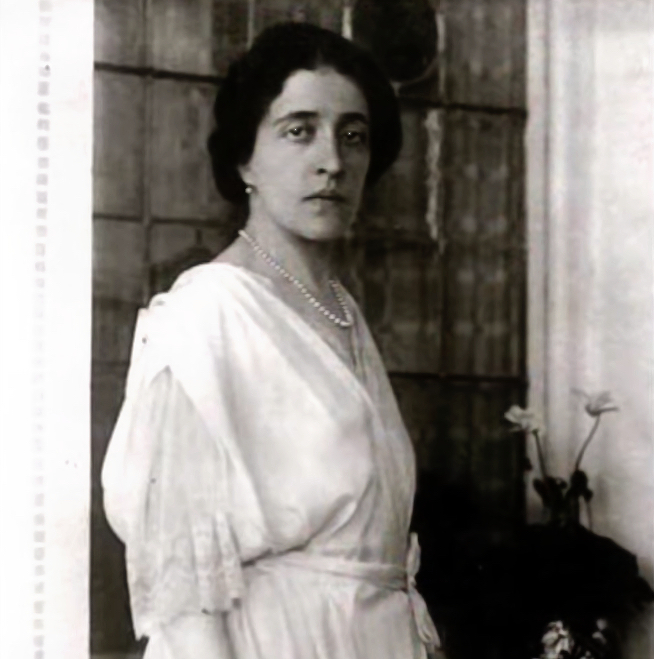
Photo of Adele Bloch-Bauer, c. 1920, Neue Galerie New York, New York, NY, USA.
In turn-of-the-century Vienna, wealthy Jewish socialite Ferdinand Bloch-Bauer commissioned Gustav Klimt to paint a portrait of his wife, Adele. Klimt was emerging at the forefront of the Vienna Secession movement—Austria’s gilded contribution to international Art Nouveau.
Adele Bloch-Bauer was herself a figure to be reckoned with in the Vienna art scene. She frequently hosted a famous art salon, using her wealth and social status to support Austrian artists like Klimt.
Upon securing the Adele Bloch-Bauer portrait commission, Gustav Klimt embarked on a laborious painting process spanning four years. Hundreds of sketches and a few specially-made costumes later, Klimt unveiled the final version of Portrait of Adele Bloch-Bauer I in 1907.
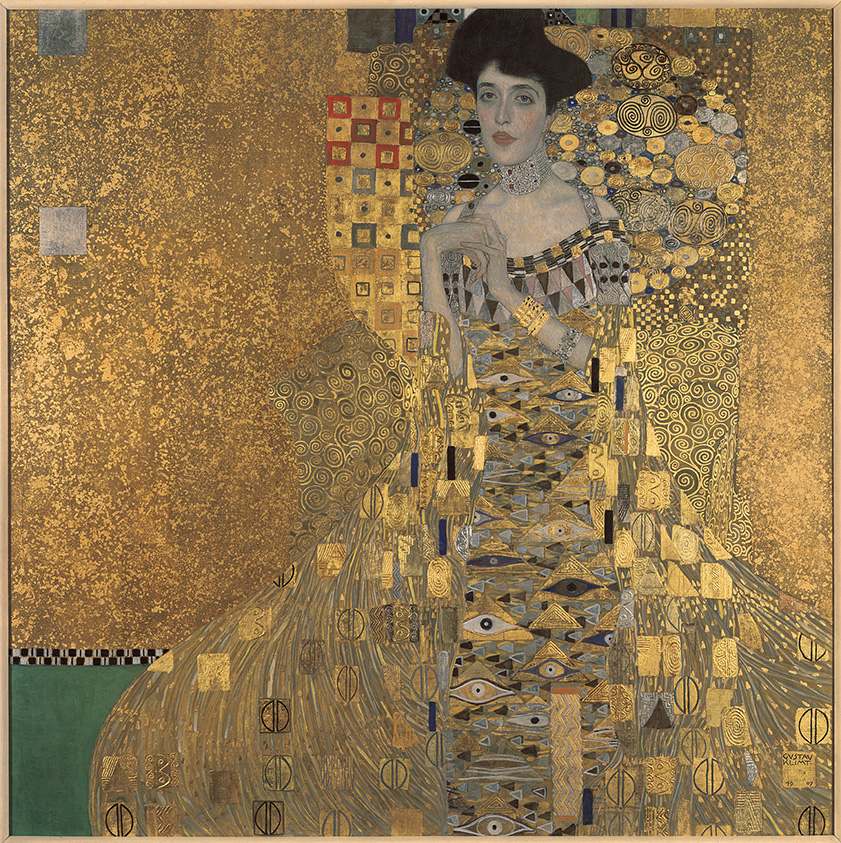
Gustav Klimt, Portrait of Adele Bloch-Bauer I, 1904-07, Neue Galerie New York, New York, NY, USA.
Inspired by his visit to Ravenna’s Byzantine gold mosaics, Gustav Klimt was fully immersed in his so-called “Golden Phase” when he began painting Portrait of Adele Bloch-Bauer I. The aptly nicknamed Woman in Gold or Lady in Gold epitomizes the multifaceted aesthetic and extremely laborious process of Klimt’s “Golden Phase.”
Like most of Klimt’s portraits, Portrait of Adele Bloch-Bauer I features a realistically rendered human figure, immersed in a deliberately non-representational—and highly decorative—background. Close observation of Portrait of Adele Bloch-Bauer I reveals Klimt’s inclusion of delicate relief work and real gold leaf amidst the oil paint.
Adele’s face, sensual and enigmatic, stands out from the composition. Her cheeks flush as she softly gazes towards the viewer. She is surrounded by a glittering collage of aesthetic references from Art Nouveau’s long, curving lines to Ancient Egypt’s all-seeing eye.
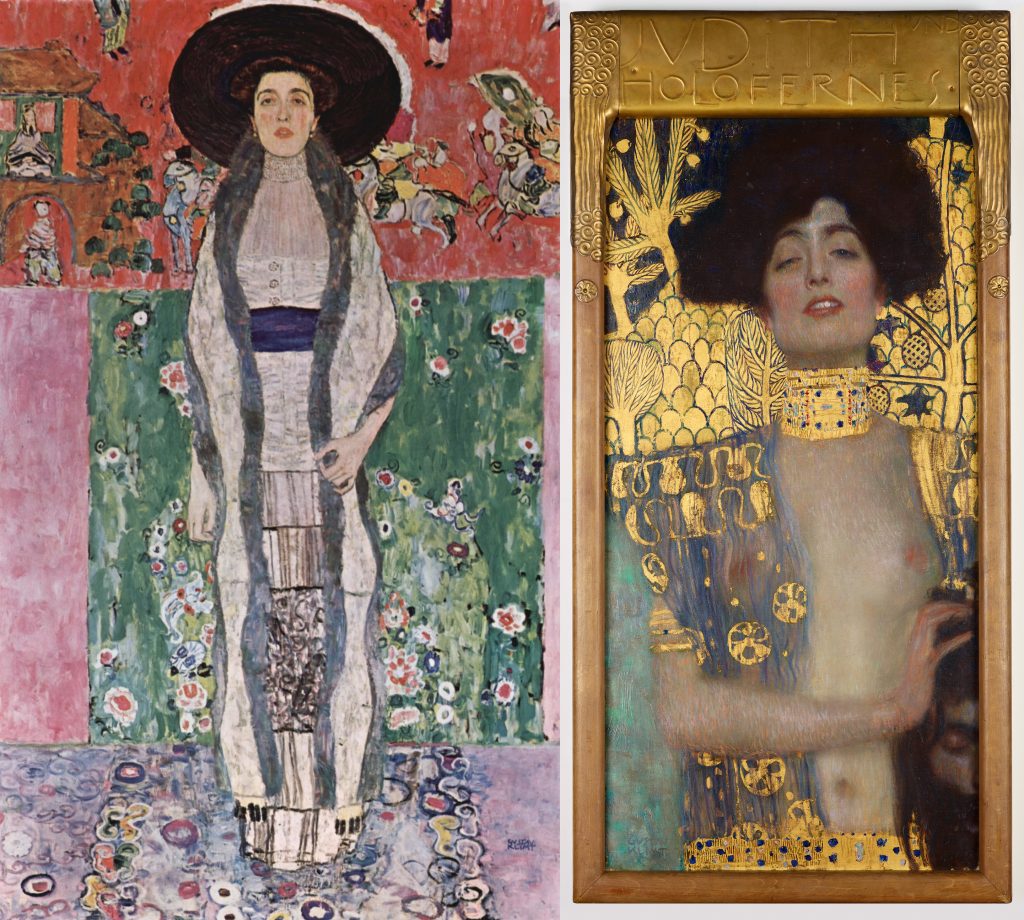
Left: Gustav Klimt, Portrait of Adele Bloch-Bauer II, 1912, oil on canvas, private collection. Wikimedia Commons (public domain); Right: Judith I, 1901, Austrian Gallery Belvedere, Vienna, Austria.
After a brief public exhibition, which garnered mixed reviews, Gustav Klimt’s Portrait of Adele Bloch-Bauer I was displayed privately in the palatial Bloch-Bauer apartment in Vienna.
Delighted with the strikingly modern painting, the Bloch-Bauers commissioned Klimt to create a second portrait of Adele. The resulting 1912 canvas (pictured above) demonstrates how Klimt abandoned his “Golden Phase” in favor of a vibrant color palette. The artist’s penchant for immaculately decorated details, however, remained intact.
On top of the two portrait commissions, Ferdinand and Adele Bloch-Bauer added several landscape paintings and drawings by Gustav Klimt to their collection of modern Austrian art. In fact, Adele Bloch-Bauer dedicated an entire room in her personal chambers to Klimt’s work, even displaying a framed photograph of the artist.
Rumor had it that Adele Bloch-Bauer’s relationship with Gustav Klimt extended beyond artist and muse. Furthermore, some historians even speculate that her likeness inspired additional Klimt masterpieces—such as The Kiss and Judith I (pictured above).
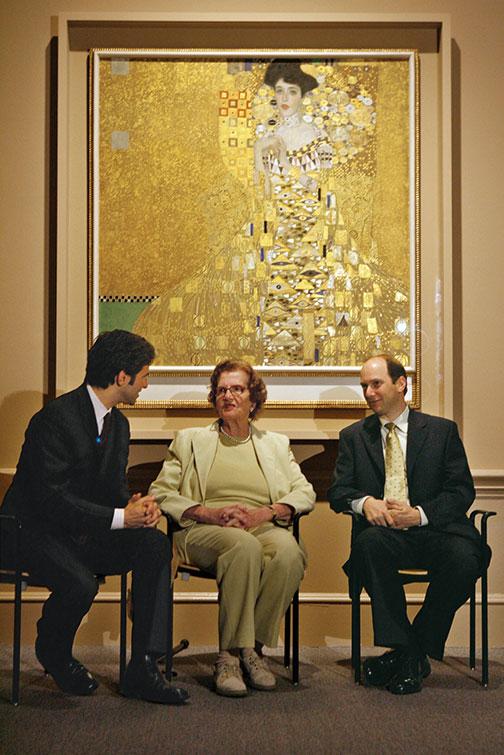
Republic of Austria v. Altmann: Photograph of Maria Altmann and E. Randol Schoenberg, right, speaking to Michael Govan, director of the Los Angeles County Museum of Art, in front of Portrait of Adele Bloch-Bauer I, 2006. AP Images.
Tragically, in 1925, Adele Bloch-Bauer died suddenly of meningitis at age 42. Her husband Ferdinand kept her portrait on display at his home until the onset World War II.
When the Nazi regime invaded Austria in 1938, Ferdinand fled the country. His apartment, and the valuable art collection it housed, were seized by the Nazis. Like many Jewish people who were displaced by the invasion, Ferdinand was never able to reclaim his belongings.
Portrait of Adele Bloch-Bauer I later ended up in the hands of the Austrian government. The Woman in Gold was exhibited at the Belvedere Gallery in Vienna for 60 years, which proudly advertised it as “the Austrian Mona Lisa.”
Meanwhile, Ferdinand’s living relatives tried and failed to reclaim the Bloch-Bauer fortune—until the 1998 Art Restitution Law was enacted in Austria.
In 2000, Ferdinand Bloch-Bauer’s niece Maria Altmann, who emigrated from Vienna to Los Angeles, sued the Republic of Austria. She demanded the return of the Bloch-Bauer Klimt paintings, including Portrait of Adele Bloch-Bauer I, to their rightful heirs.
Soon, the Republic of Austria v. Altmann case garnered international attention. After a lengthy legal battle, Altmann eventually won the case. The Belvedere Gallery was then forced to turn over their most prized painting to Ferdinand and Adele Bloch-Bauer’s descendants.
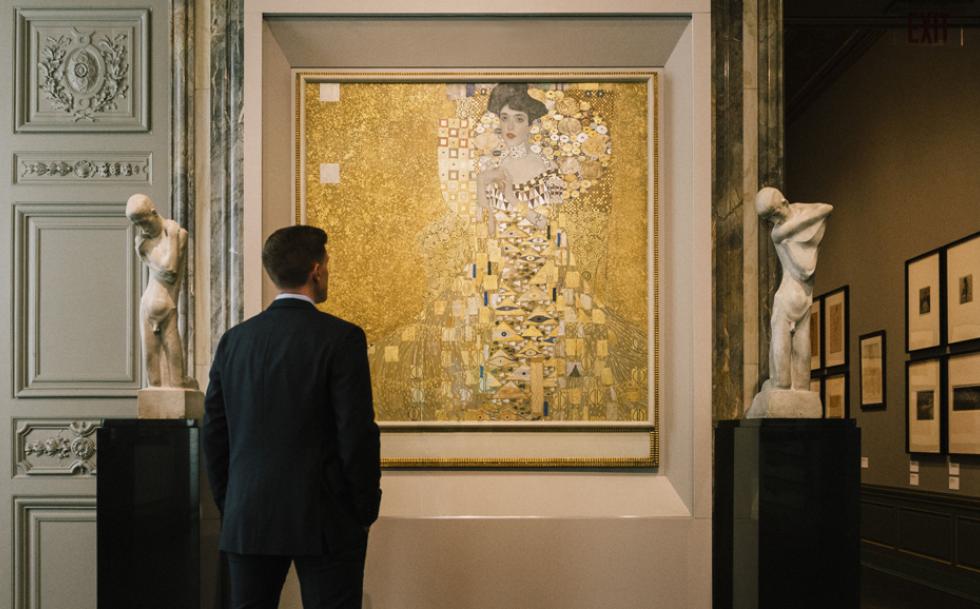
Photo of Gustav Klimt’s Portrait of Adele Bloch-Bauer I (1907) on display, Neue Galerie New York, New York, NY, USA. Gallery’s website.
The legal controversy attracted new audiences—and new intrigue—to Klimt’s masterful portrait. The case even inspired a 2015 feature film and highlighted ongoing efforts to repatriate other Nazi-looted art.
In 2006, Maria Altmann sold the painting for $135 million—the highest price ever paid for a painting at the time. Today the Woman in Gold is on permanent display at the Neue Galerie in New York City alongside an impressive collection of German and Austrian art of the same period.
Gustav Klimt’s Portrait of Adele Bloch-Bauer I is one of the most recognizable portraits in art history today. It epitomizes the opulent, ornamental style of the Vienna Secession. Also it highlights the critical role of Jewish patrons of the arts—including women like Adele Bloch-Bauer—in shaping the aesthetics of Modernism.
DailyArt Magazine needs your support. Every contribution, however big or small, is very valuable for our future. Thanks to it, we will be able to sustain and grow the Magazine. Thank you for your help!